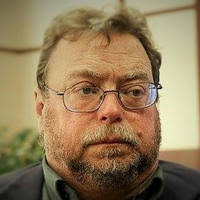The "Family Jewels" documents recently released by the CIA show that not much has changed since the 1960s and 70s. American journalists were being physically surveilled and wiretapped, government employees thought to be leakers were also under surveillance and subjected to polygraphs, and U.S. domestic communications were being wiretapped as part of "testing."
However, the CIA also acquired from AT&T "routing slips" of "overseas telephone calls between persons in the US and persons overseas and telephone calls between two foreign points routed through US switchboards." The CIA domestic wiretapping operation lasted for approximately six months. In February 1972, AT&T "call slips" were obtained for three of four months for US-China telephone calls. Since interception was not involved, the operation was deemed legal.
Domestic microwave communications were intercepted as part of a "communications link loading study."
In September 1972, "hearability" tests of certain high frequency long-distance commercial circuits between the US and South America were conducted by the CIA. On January 30, 1973, the tests were aborted after it was determined they were illegal.
The CIA routinely provided support, including technical assistance, to metropolitan police departments in their efforts to surveill anti-Vietnam War groups. Liaison was established between the CIA and the Montgomery County, Maryland; Fairfax County, Virginia; Arlington County, Virginia; Washington, DC Metropolitan; Miami; New York City; New York State; Los Angeles; and San Francisco police departments and the San Mateo County Sheriff's Office. Through the CIA's contact with the Law Enforcement Assistance Administration (LEAA), it had contact with police departments, large and small, throughout the country.
The CIA maintained support and training links with foreign police agencies through the International Police Academy.
CIA support and training for foreign police officers was conducted through the International Police Academy through the US Agency for International Development (USAID)..
The CIA was concerned about a Ramparts magazine article in January 1972 that stated that the CIA's Bob Kiley and Drex Godfrey were working to improve police organizations throughout the country. The information was contained in a December 21, 1971, memo written by DDP Thomas H. Karamessines.
CIA mail covers, in cooperation with the FBI, conducted mail surveillance, beginning in 1953, of incoming and outgoing Russian and "other selected" mail at Kennedy Airport in New York. The operation was code named SRPOINTER. It was part of an overall project called HTLINGUAL. A similar operation was conducted in San Francisco for China incoming and outgoing mail. The operation was code-named Project WESTPOINTER.
A CIA black bag breaking and entering was conducted at the home of a CIA employee, a defector, in Silver Spring, Maryland. The operation was REDFACE I.
The CIA participated in a domestic CIA and National Security Agency communications intelligence (COMINT) collection project, which they deemed as "illegal," which was code-named LONG SHAFT.
A May 30, 1973 CIA memo from CIA Inspector General William V. Broe points to a "high degree of resentment" among "many Agency employees" over being asked to participate in a domestic spying operation code-named MHCHAOS. Americans who traveled to the following locales were targeted by MHCHAOS: Paris, Stockholm, Brussels, Dar es Salaam, Conakry, Algiers, Mexico City, Santiago, Ottawa, and Hong Kong.
The program to reptriate Bay of Pigs Cuban Brigade prisoners from Cuba was code-named Project MOSES.
The CIA cooperated with the Bureau of Narcotics and Dangerous Drugs (BNDD), the forerunner of the Drug Enforcement Administration (DEA), in Project TWO-FOLD. The CIA also funded foreign travel on behalf of the Cabinet Committee on International Narcotics Control during the Nixon administration.
The CIA's collection of data on dangerous drugs from U.S. pharmaceutical and other firms was code-named Project OFTEN.
After a leak of information concenring the Strategic Arms Limitation Talks (SALT) to the New York Times' William Beecher, President Richard Nixon ordered an investigation of the leak and the CIA arranged with the State Department's Security chief G. Marvin Gentile to polygraph one Defense Department official and three from the Arms Control and Disarmament Agency. After Murrey Marder of the Washington Post reported that the FBI polygraphed the four government officials, FBI Director J. Edgar Hoover was incensed and said it was another government agency that was responsible. The documents released show that Hoover was right -- the CIA was the agency involved.
Next Page 1 | 2 | 3 | 4 | 5 | 6
(Note: You can view every article as one long page if you sign up as an Advocate Member, or higher).





